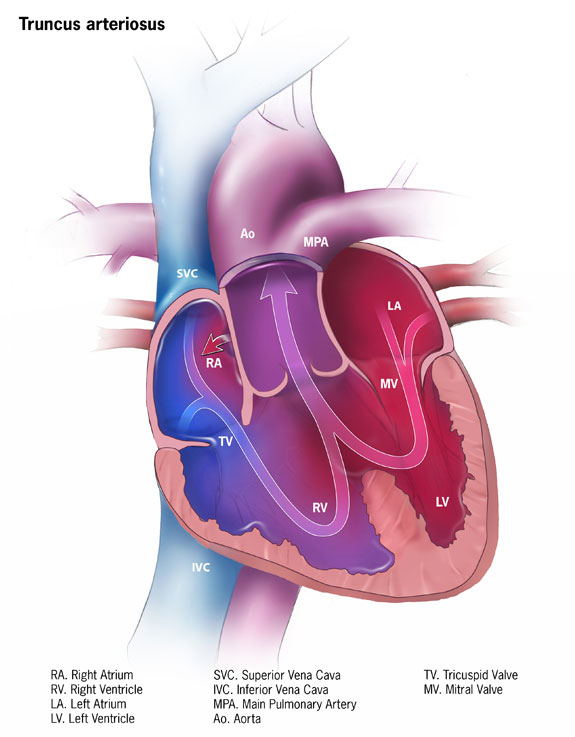Shared Content Block:
Surgery Styles -- "surgery-flex-gallery" class
Truncus Arteriosus
The congenital heart defect (present at birth) known as truncus arteriousus is a result of there being only one large blood vessel leading out of the heart as opposed to the normal two vessels. Additionally, the two lower chambers of the heart are not separated (ventricular septal defect), which allows oxygen-rich and oxygen-poor blood to be mixed, resulting is severe circulatory problems and a lack of adequate oxygen provided to the body.
Surgery is necessary to treat this condition and is generally done prior to two months of age. During the first few weeks of life, truncus arteriosus can be observed through a blue coloring of the skin, poor feeding and growth, shortness of breath, rapid breathing, or irregular heartbeats.
Although the exact cause of congenital heart defect is not known, there are many factors that may contribute to increased risk for developing truncus areteriosus. These include contraction of a viral illness during pregnancy, poorly controlled diabetes during pregnancy, taking certain medications, chromosomal disorders, and smoking during pregnancy.
More information on truncus arteriosus can be found on the Children's Hospital Colorado website.

Photo courtesy of the CDC (Centers for Disease Control and Prevention)
Appointments and Information
This information is provided by the Department of Surgery at the University of Colorado School of Medicine. It is not intended to replace the medical advice of your doctor or healthcare provider. Please consult your healthcare provider for advice about a specific medical condition.